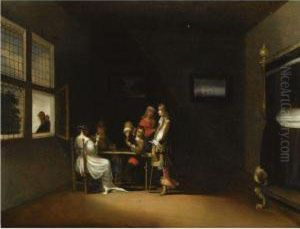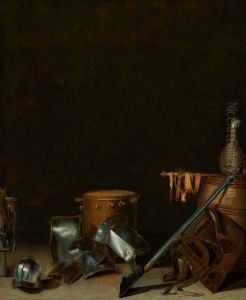Gerhard Van Steenwijck Paintings
Gerhard van Steenwijck, also known as Gerrit van Steenwyck or Gerard van Steenwyck, was a Flemish Baroque painter known primarily for his still-life works, especially those depicting vanitas themes, which served as a reminder of the transience of life and the futility of pleasure. He was part of a family of painters and was believed to have been born around 1585 in Antwerp, which was then part of the Spanish Netherlands.
Van Steenwijck's work is characterized by its meticulous attention to detail, often including elements such as musical instruments, books, skulls, and hourglasses, all intended to symbolize the brevity of human existence and the inevitability of death. While his paintings are less well-known than those of some of his contemporaries, they exemplify the still-life genre of Northern Europe and offer insight into the cultural preoccupations of the early 17th century.
Gerhard was likely influenced by his family, as his father, also named Gerrit van Steenwijck, was a painter, and his brother, Hendrick van Steenwijk II, was a well-regarded painter of architectural interiors. The van Steenwijck family moved to the Dutch Republic in the early 17th century, and Gerhard's work may have been influenced by the art scene in Leiden and Amsterdam, where still-life painting was flourishing.
The exact details of Van Steenwijck's life, including his training and the extent of his work, remain relatively obscure, and his death is recorded as having occurred in 1640. Despite the scarcity of biographical information, his surviving paintings contribute to our understanding of vanitas and still-life painting during the Baroque period.

